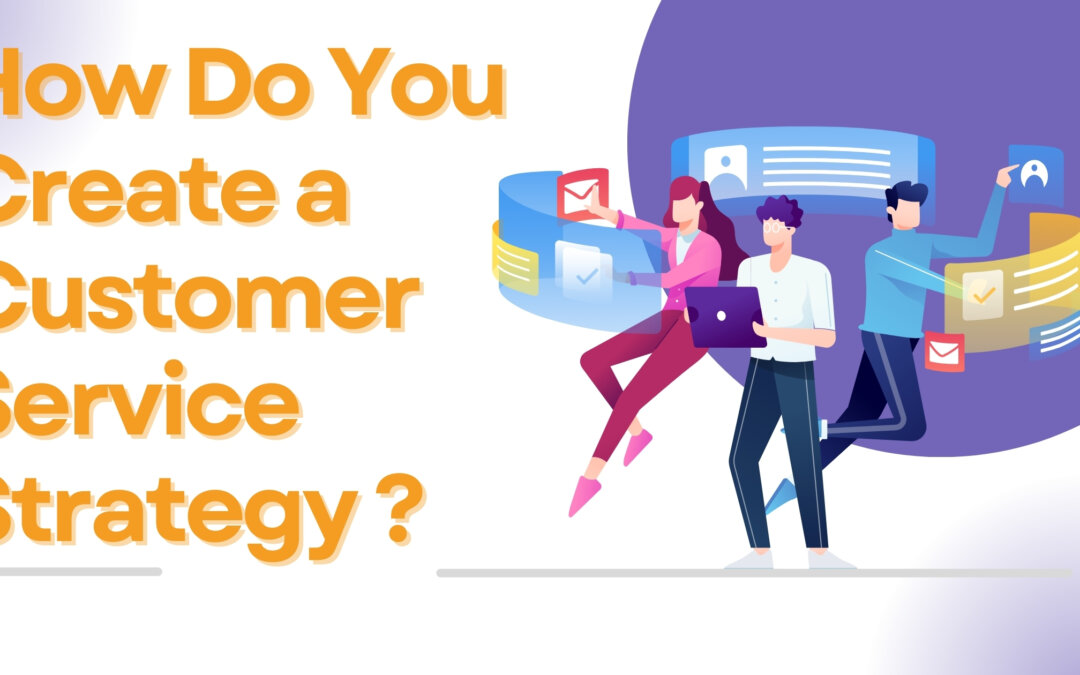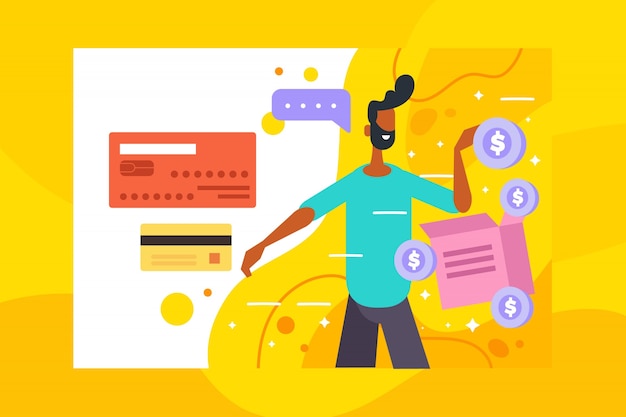In today’s competitive business landscape, creating a strong customer service strategy is essential for success. Whether you are a small business owner or looking to start your business, providing exceptional customer service can set you apart from the competition. So, how do you create a customer service strategy that not only meets but exceeds the expectations of your customers?
Understanding the Importance of Customer Service

Customer service is much more than just resolving issues or answering questions; it is about creating a positive and memorable experience that encourages customers to remain loyal to your brand. Exceptional customer service leads to increased customer retention, which is more cost-effective than acquiring new customers. According to studies, it can cost five times as much to get a new customer as it does to keep an existing one. Therefore, investing in a strong customer service strategy is both a financial and strategic necessity.
Defining Your Customer Service Goals

Before developing a customer service strategy, it’s essential to define clear objectives. Clear goals provide direction and help measure success. Common customer service goals include:
- Improving customer satisfaction scores
- Reducing customer wait times
- Increasing first contact resolution rates
- Enhancing overall customer experience
By setting specific, measurable, achievable, relevant, and time-bound (SMART) goals, you can focus your efforts and resources on areas that will have the most significant impact.
Knowing Your Customer

Understanding your customer base is fundamental to providing excellent customer service. This involves:
- Creating detailed customer personas:
Based on actual facts about your current clients and market research, these are semi-fictional depictions of your ideal clientele. - Analyzing customer feedback:
Regularly collect and analyze feedback to understand customer needs, preferences, and pain points. - Segmentation:
Group your customers based on common characteristics such as demographics, purchasing behavior, and customer lifetime value.
With this knowledge, you can tailor your customer service efforts to meet the specific needs and expectations of different customer segments.
Building a Customer-Centric Culture
A customer-centric culture places the customer at the heart of all business decisions. This culture must be embraced at all levels of the organization. Key steps to fostering a customer-centric culture include:
- Leadership commitment:
Leaders must demonstrate a commitment to customer service by modeling the desired behaviors and prioritizing customer-centric initiatives. - Employee training:
Equip your team with the skills and knowledge needed to deliver exceptional service. This includes training on product knowledge, communication skills, and problem-solving techniques. - Empowerment:
Empower employees to make decisions that benefit the customer. This can involve giving them the authority to resolve issues without needing to escalate them to higher management.
Developing a Multi-Channel Support System
Customers expect to reach your business through various channels, including phone, email, live chat, social media, and in-person interactions. A multi-channel support system ensures that customers can choose the method of communication that best suits them. To develop an effective multi-channel support system:
- Consistency:
Ensure consistent service quality across all channels. Customers should receive the same level of service regardless of how they contact you. - Integration:
Use integrated customer service software that allows you to manage all communication channels from a single platform. - Accessibility:
Make it easy for customers to find your contact information and reach out to you.
Personalizing the Customer Experience
Personalization is a powerful tool in customer service. It makes customers feel valued and understood. Ways to personalize the customer experience include:
- Using customer data:
Leverage customer data to tailor interactions. This can include addressing customers by their names, referencing past interactions, and offering personalized product recommendations. - Segmenting your audience:
Create targeted marketing and service strategies for different customer segments. - Customizing communications:
Personalize emails, messages, and other communications based on customer preferences and behaviors.
Utilizing Technology to Enhance Customer Service
Technology can significantly enhance your customer service strategy. Consider incorporating the following technological tools:
- Customer Relationship Management (CRM) systems:
These systems help you track customer interactions, manage customer data, and automate various service tasks. - Chatbots and AI:
plementing chatbots and AI can provide instant support for common queries and free up human agents for more complex issues. - Analytics tools:
Use analytics to monitor customer service performance, track key metrics, and identify areas for improvement.
Proactive Customer Service
Proactive customer service involves anticipating customer needs and addressing potential issues before they become problems. Implementing proactive customer service can include:
- Regular follow-ups:
Check in with customers after a purchase or service interaction to ensure satisfaction and address any lingering issues. - Offering solutions before problems arise:
Use data and customer insights to predict potential problems and provide solutions proactively. - Educating customers:
Provide customers with resources, tutorials, and tips to help them get the most out of your products or services.
Measuring and Analyzing Customer Service Performance
Measuring and analyzing your customer service performance is crucial for continuous improvement. Key performance indicators (KPIs) to monitor include:
- Customer satisfaction score (CSAT):
Measures how satisfied customers are with your service. - Net promoter score (NPS):
Gauges customer loyalty by asking how likely they are to recommend your business to others. - First response time:
The average time it takes to respond to customer inquiries. - Resolution time:
The average time it takes to resolve customer issues.
Regularly review these metrics to identify strengths and areas for improvement.
Encouraging Customer Feedback
Customer feedback is invaluable for improving your service strategy. Encourage feedback through:
- Surveys and questionnaires:
Use online surveys to gather detailed feedback on customer experiences. - Social media:
Monitor social media channels for customer comments and engage with them to address their concerns. - Direct communication:
Encourage customers to provide feedback directly through your website, email, or customer service channels.
Rewarding Loyal Customers
Loyal customers are invaluable to your business. Show appreciation and encourage repeat business by rewarding loyalty. Effective strategies include:
- Loyalty programs:
Implement a loyalty program that offers points, discounts, or exclusive offers to repeat customers. - Personalized offers:
Send personalized discounts or special offers based on customer preferences and purchase history. - Recognition:
Recognize and celebrate your loyal customers through special events, VIP programs, or public acknowledgment on social media.
Conclusion
Creating a customer service strategy that keeps customers coming back involves a combination of understanding your customers, building a customer-centric culture, leveraging technology, and continuously improving your service based on feedback and performance metrics. By prioritizing customer satisfaction and loyalty, you can foster lasting relationships that not only retain customers but also turn them into advocates for your brand. Remember, exceptional customer service is an ongoing effort that requires dedication, flexibility, and a genuine commitment to your customers’ success.
FAQs
Q1: Why is a customer service strategy important for business success?
A: A customer service strategy is crucial because it helps in retaining customers, which is more cost-effective than acquiring new ones. It also transforms satisfied customers into loyal advocates who promote your brand, leading to sustained business growth.
Q2: What are the key components of an effective customer service strategy?
A: An effective customer service strategy includes clear goals, understanding your customers, fostering a customer-centric culture, developing a multi-channel support system, personalizing the customer experience, utilizing technology, offering proactive service, measuring performance, encouraging feedback, and rewarding loyal customers.
Q3: How can I personalize the customer service experience?
A: Personalize the customer service experience by using customer data to tailor interactions, segmenting your audience for targeted strategies, and customizing communications based on customer preferences and behaviors.
Q4: What role does technology play in enhancing customer service?
A: Technology enhances customer service by providing tools like CRM systems to track interactions and manage data, chatbots and AI for instant support, and analytics tools to monitor performance and identify areas for improvement.
Q5: How can proactive customer service benefit my business?
A: Proactive customer service benefits your business by anticipating customer needs, addressing potential issues before they arise, conducting regular follow-ups, and educating customers to maximize their product or service experience.
Q6: What are some key performance indicators (KPIs) for measuring customer service success?
A: Key performance indicators for measuring customer service success include Customer Satisfaction Score (CSAT), Net Promoter Score (NPS), first response time, and resolution time.
Q7: How can I encourage customer feedback?
A: Encourage customer feedback through surveys and questionnaires, monitoring and engaging on social media, and providing direct communication channels on your website and via email.
Q8: How often should I review my customer service strategy?
A: Regularly review your customer service strategy by continuously monitoring performance metrics, gathering customer feedback, and making necessary adjustments to improve service quality and meet evolving customer needs.









